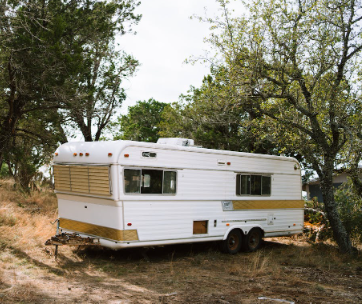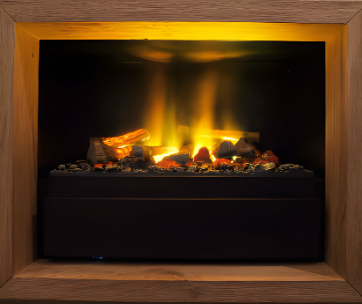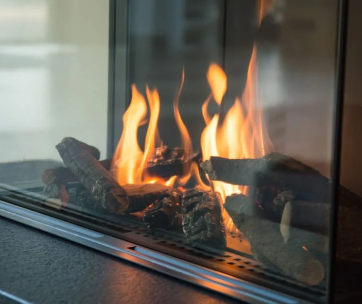After owning multiple fireplaces, we can say without fear of contradiction, when shopping for electric fireplaces getting to know all the components required for them to work optimally, beforehand, is essential.
That said a vast majority of first-time shoppers of electric fireplaces assume that electric fireplaces have loads of requirements to operate. This assumption is probably driven by how much electric fireplaces offer in terms of warmth, coziness, and ambiance improvement.
However, one cannot be further from the truth by making this assumption. Certainly, in terms of design, installation, and maintenance, electric fireplaces are simplistic when compared to gas and wood-burning fireplaces. And this directly translates to fewer requirements needed to operate an electric fireplace.
In this article we have outlined all that you need to operate your new electric fireplaces and further, we have touched on what you do not need.
What is needed to operate an electric fireplace?
Unlike traditional gas and wood-burning fireplaces, electric fireplaces run entirely on electricity. With no form of combustion taking place in them, they have zero emissions and therefore low maintenance works. As such for an electric fireplace, you will need only three things for the unit to run optimally. These include:
- Power supply
- Suitable location
- Safety precautions
Power supply
The first requirement is having a power supply for the electric fireplace. Gas and wood-burning fireplaces use gas and firewood respectively as fuel to operate. While electric fireplaces on the other hand only need electricity to operate. Electric fireplace units come equipped with leads and plug to supply electricity to the unit.
The rule of thumb with electric fireplaces is that you should either hard-wire the unit to the power line of the house or plug it directly into the wall socket. You should never connect the electric fireplace to an extension or surge protector, as both are fire hazards after long periods of continuous operation.
Additionally, when checking the power supply you should also check on:
- Power cable – the power cable of your electric fireplace model should be long enough to reach the power source.
- Power socket – the wall socket where the unit will be plugged into should be suitable for the electric fireplace. It should typically be a standard 3-prong grounded, 120 volts outlet.
Suitable location
The next requirement to operate an electric fireplace is identifying a suitable location to install the unit. Here is why the location of installing your unit is important:
Apart from electric fireplaces with infrared heaters, the rest operate similarly to space heaters. They draw in the air using a blower fan and pass the cool air over a heating coil to warm the air. The warm air is then forced out using the fan to heat the room. This means that the free flow of air into and out of the electric fireplace is a necessity. Placing the electric fireplace in a suitable location is essential since it helps reduce the possibility of your electric fireplace overheating from poor ventilation and becoming a threat to you and your home
Here are some pointers to the ideal location for installing an electric fireplace:
- First, the location should be near an electric socket that the electric fireplace would be plugged into.
- It should be on a flat-level surface and not on a carpet.
- It should not be in a room with moisture such as a bathroom
- It should be away from walls, curtains, and furniture. To provide enough space around the electric fireplace for perfect ventilation
- It should not be in a confined space such as on a cupboard
Safety precautions
The final requirement is to adhere to electric fireplace precautions to ensure that you and your family remain safe when using the electric fireplace. The main precautions include:
- Going through your electric fireplace user’s manual, to identify all the dos and don’ts of the unit.
- Keep the electric fireplace away from moisture
- Ensuring the electric fireplace is not placed near flammable objects
- Ensuring that kids and pets do not remain unattended with the electric fireplace running.
- Have a professional inspect the electric fireplace prior to installation to ensure the unit is safe.
- Avoid touching the electric fireplace’s surface while it is running.
- Never leave the electric fireplace to run while unattended
- Periodically clean the electric fireplace
Now that you fully comprehend what is required to run an electric fireplace, let us focus on what is not required.
What is not needed to operate an electric fireplace?
Electric fireplaces run entirely on electricity and are highly energy efficient. Additionally, unlike traditional gas and wood-burning fireplaces, electric ones do not emit carbon monoxide, smoke, soot, or ash. Hence, electric fireplaces do not require a chimney or house vent, as is the case with traditional fireplaces.
Chimney/ flue
This is an essential feature in traditional fireplaces. Traditional wood-burning and gas fireplaces burn fuel and give off harmful by-products. Chimneys are therefore used with traditional fireplaces to prevent the accumulation of smoke, soot, and harmful gases from the fireplace, in the house.
However, since electric fireplaces operate entirely on electricity and do not release any of the mentioned harmful byproducts of combustion, they do not need a chimney installed to operate optimally.
House Vent
Traditional fireplaces create heat through combustion. That makes a constant supply of enough oxygen to the room with the fireplace a necessity. A house vent is therefore installed with traditional fireplaces to ensure there is a constant flow of fresh air to the room
Electric fireplaces on the other hand do not require a constant fresh oxygen supply to produce heat. They do so by using a blower fan or infrared heater. Therefore, a vent is not a requirement with electric fireplaces.
A key thing to note is that electric fireplaces do not need a constant supply of fresh oxygen. They require proper ventilation to allow the free flow of cool air into the unit and warm air out of the unit. For that reason, the inlet and outlet vents on the electric fireplace should never be covered at any moment.
Conclusion
Knowing all the requirements of operating an electric fireplace beforehand is essential. It not only ensures the unit functions properly upon installation, but also it reduces the chances of predictable accidents occurring or the unit malfunctioning.
Electric fireplaces have a simplistic design meaning they have minimal requirements to run optimally. In this article, we have highlighted all that you need to know about what is and is not required to run an electric fireplace. Now that you have a grip on that, using your new electric fireplace will seem seamless.






























Comments